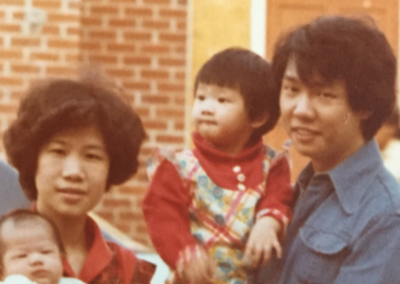Battling burnout: Self-care and organizational tools to increase community health worker retention and satisfaction

As rates of burnout and turnover in clinical settings continue to rise, healthcare systems are increasingly prioritizing the care and well-being of front-line staff. Burnout is defined as the emotional exhaustion that results in depersonalization and decreased personal accomplishment at work. Community Health Workers (CHWs) in particular are at risk of burnout as they frequently work closely with patients with complex physical and social needs whose cases require an intentional focus on relationship building.
CHWs have deep ties to the communities they serve and in some cases have experienced similar traumas as the individuals they support. In their roles, they build strong, trusting relationships with their patients. That mutual trust and respect enables patients to feel comfortable confiding in CHWs, sharing details about their challenges and past traumas. In some cases, exposure to secondary trauma can lead to a phenomenon known as compassion fatigue. Compassion fatigue is a form of burnout associated with feelings of hopelessness and difficulties dealing with work or effectively performing duties. The first step in combating compassion fatigue is being aware when symptoms arise. The Professional Quality of Life Scale (ProQOL) helps identify both job satisfaction and compassion fatigue.
Healthcare organizations are recognizing the critical role CHWs play in improving overall the care team’s ability to treat the whole person. However, to build effective, sustainable, and equitable interventions, leaders need to be aware of and address the many contributing factors lead to high rates of burnout among CHWs, including:
- Work overload
- Lack of care team integration
- Lack of proper supervision
- Lack of autonomy
- Lack of consistent training
Annual turnover rates of CHWs can be as high as 50%. High staff turnover rates within primary care have been shown to negatively impact patient experience and lead to higher costs for the practice.
In order to address this growing concern, CHWs should be encouraged to not only become aware when they are experiencing burnout, but actively engage in various self-care strategies (exercise, eating healthy, sleeping regularly, etc.) when working with patients with complex needs.
But self-care alone is not enough. Organizations that employ CHWs have a responsibility to adopt strategies and approaches that support the well-being of these staff and improve their experience on care teams. Many clinical teams across the country are testing and adopting such strategies that can help to reduce staff turnover, improve care delivery and build trusting relationships with patients and families.
Strategies and tools for increasing CHW self-care and sustainability:
Increasing awareness of burnout and the importance of self-care: Virginia Commonwealth University Health System (VCU Health) uses brief voice recordings to reflect on each CHWs weekly patient interactions, experiences and needs. This allows supervisors track how CHWs are growing and improving in their practice, while helping to manage employee burnout and stress. The reflection logs have proven to be an empowering experience for CHWs as it creates a space to freely share stories, identify areas of improvement, while processing difficult situations.
Providing adequate training for CHW supervisors: One of the most important factors of a CHWs success with their patients and in their work setting is a supportive and experienced supervisor. Supervisors need to regularly check in with CHWs in order to have a better understanding of their day to day responsibilities and how they are setting up boundaries with their patients to ensure they aren’t taking on too much work or emotional weight. Supervision also matters regarding the role place CHWs have as part of the care team. Clinical supervision is important to ensure CHWs are engaged in care planning and patients are being referred appropriately and when necessary.
Bread for the City created a Supervision Toolkit designed to improve the practice of supervisors in their organization, which would then lead to increasing staff satisfaction and reducing burnout. The toolkit was originally comprised of eight modules, which was later shortened based on feedback from employees on the usefulness of each module. Bread for the City first tested handing out written manuals; they found it was not effective as disseminating the content, and supervisors needed an in-person training. Each module is covered over a three-month period. Supervisors meet during 1:1 meetings to provide additional tips and encouragement. While Bread for the City is still testing the effectiveness of the Toolkit, one of the modules they are finding most useful was the Vicarious Trauma: Creating Your Self Care Plan.
Increasing the visibility of CHWs within the organization, especially to leadership: MercyOne’s CHW team has found cultivating leadership and peer support within their clinics and the larger health system to be essential. The CHWs have a unique role, which is most effective when they spend a portion of their time in the community, and having the opportunity to discuss their work with leaders has led to ongoing support for their roles. MercyOne’s strategies include:
- Holding quarterly education days for CHWs. Run by their Population Health Services Organization (PHSO), these important meetings are a chance for their growing CHW staff to learn together and develop a sense of connectedness. With only one CHW in each clinic, a sense of belonging is vital for self-care and building a collective voice. Staff members practice motivational interviewing, take part in team-building exercises, review difficult cases, and discuss self-care strategies.
- Connecting at lunch with MercyOne PHSO, hospital and health system leaders is an important component of these education days. During these lunches, CHWs describe their day-to-day work and share patient success stories. This has increased leaders’ awareness of the health-related social needs within MercyOne patient populations while demonstrating the positive impact CHWs have on their patients’ lives and the value they create in their clinics.
- Demonstrating the value of their work with patients by giving updates in morning staff huddles, educating staff members about community resources at monthly staff meetings, and hosting lunch and learn sessions for staff members. They also consistently update providers and the nursing staff about patient progress toward meeting health-related social needs and support the care team can provide. This ensures the care team is fully aware of how the CHW is partnering with their patients to meet their needs. Increased visibility of the CHWs’ work allows for improved coordination and a collective effort to address all aspects of patients’ health.
- Allowing CHWs to spend time volunteering at the community resources to which they commonly refer patients. This provides CHWs with a first-hand understanding of the resource organization’s process, allowing them to make more accurate and informative referrals for their patients.
By taking time to develop shared understanding of the CHW role, the patients they serve, and community resources, the CHWs are able to identify as a group where more support is needed. Having leadership in the room creates greater visibility of the CHW role in the organization and alignment with leadership on program needs.
Providing adequate training to CHWs: While organizations like the California Association for Community Health Workers are advocating for the adoption of core competencies for CHW roles, currently, the roles and qualifications of CHWs can vary widely depending on the program. As such, there are few opportunities for CHWs to get formal job training, and in many cases organizations will train their own CHWs. Given their unique skill sets, trainings should focus on highlighting and reinforcing CHW strengths, including their ability to utilize their shared experiences to connect, and more formalized modules that emphasize health promotion. Trainings should be held in multiple languages and designed for CHWs and clinical staff to ensure both are providing consistent information and messaging, which is essential in making sure patients are receiving the best care.
In addition, regular training sessions for case support, stress management, addressing burnout and self-care will provide an environment for CHWs to be better equipped to handle all aspects of their work. For some community health centers, trauma workshops help CHWs become more aware of how patient trauma impacts them. These trauma-informed workshops can occur in-house or be facilitated by an outside organization, such as The Boston Public Health Commision. CHWs appreciate the space these trainings provide, not only for their qualifications to be validated but also to learn techniques to better support their patients. Continued discussions, time set aside in regular meetings and ongoing support are critical to ensuring CHWs are set up for success in their roles.
Adopting effective and inclusive interdisciplinary team-based care delivery: How interdisciplinary team-based care is operationalized can heavily impact the ability of CHWs to effectively engage in care teams. In 2017, in partnership with the Boston Foundation, Health Leads facilitated a two year learning and improvement collaborative with CHW teams from four Boston-based Community Health Centers, focused on improving patients’ access to essential resources. During this collaborative, CHWs described how inefficient team-based care processes impacted their wellbeing at work. For example, without designated time for interdisciplinary case conferences, CHWs had to connect individually with each of a patients’ providers and retell their story each time. This led to emotional and mental exhaustion by CHWs that experienced second hand trauma. In some cases, there were no structures in place for CHWs to communicate with their patients’ behavioral health providers and the CHWs had to establish these communication channels on their own. At organizations where families were empaneled to several different care teams, CHWs often played the role of coordinating care for families across multiple provider teams to ensure that the families’ needs were being met. The teams participating in Health Leads’ learning collaborative, mitigated these challenges using process mapping and improvement science to pinpoint where processes break down and cause additional, avoidable stress for CHWs. In collaboration with other care team members and leadership, they then designed and tested strategies to improve communication and coordination.
Supporting front line staff in establishing and maintaining techniques for self-care as listed above will reduce burnout and increase retention among CHWs. Given the challenges facing this critical workforce today, every care team should be investing or building capacity in CHW supervision, team and colleague storytelling and ongoing training.
These findings were made possible through the generous support and partnership from The Commonwealth Fund and The Boston Foundation.




